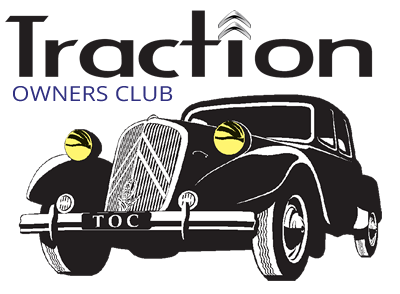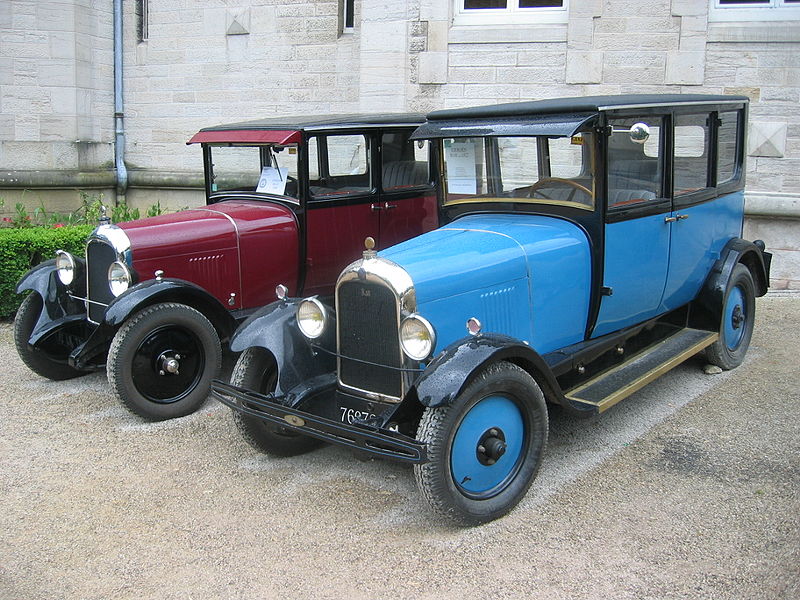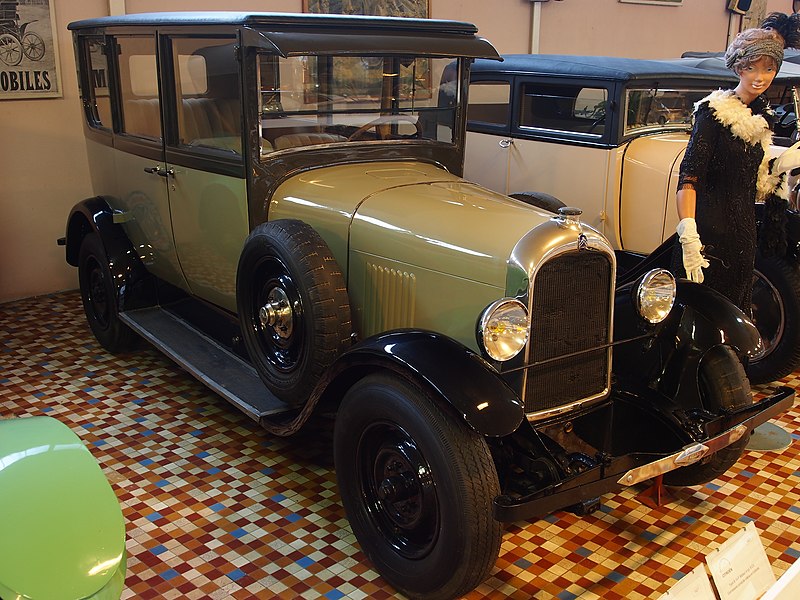Brief Descriptors
Visual identifiers are tricky on these RWD Citroens, it is more of an art than a science. All through – 1919 – 1928 – subtle changes took place within the models, sometimes deliberate, sometimes as parts were quite literally more or less available to put on them.
Underpinning the changes was the need to improve the cars as the industry developed without incurring serious re-tooling costs. Hence the Type A to the last Type B are all broadly similar in shape and operation albeit with incremental changes e.g. from precious little in the way of braking on the Type A & C to 4x wheel braking + servo on the B14.
With the foregoing in mind, as some of these cars were assembled in Slough yet more subtle variations crept into the finished product.
Confusion is therefore easy and the following explanations are not definitive, if all the descriptors are not apparent go, with the overall direction, a holistic approach i.e. think of them as being a guide to forming an opinion as to type.
Production Timeline

Paris 1919
The first Citroën motor car, the Type A 10HP was introduced in April 1919. Engine size was 1327cc. The cars were imported into England in good numbers and always in RHD (as was then the practice for very many French cars). There were variations in chassis length and many permutations of body styles. The Type A was phased out (in June 1921) in favour of the B2.
Paris 1921
Type B2 appeared late in 1921. A development of the Type A, it had a bigger engine of 1452cc. Famously, Citroën used this model as the base for the fleet of Taxis (see elsewhere) that he put onto the streets of Paris.
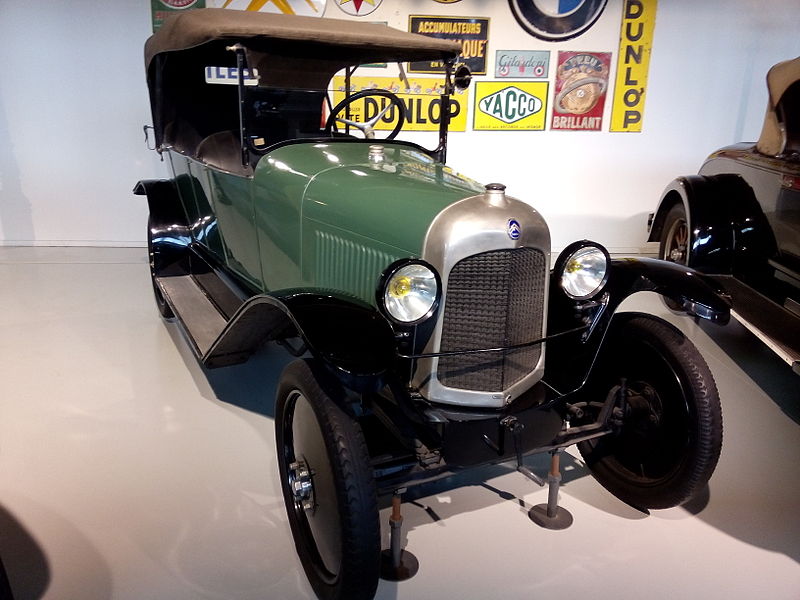
Sandra Fauconnier, CC BY-SA 3.0 https://creativecommons.org/licenses/by-sa/3.0, via Wikimedia Commons
Paris 1922
The Type C 5HP (the very small Citroën) appeared in the summer of 1922 and was intended to capture the “cycle car” and “ladies” markets. It was small and lightweight with an engine of 856 cc. It also had an electric starter !! Cycle cars it should be explained were cheap, very small and flimsy vehicles, positioned in the market between motorcycles and motor cars. If they weighed less than 350 kg they fell into a tax bracket quite a bit lower than that for a “motor car”.
It was intended that the Type C should be made in parallel with the bigger Type B series, and develop along its own course – hence two variations emerged; the Type C2 and Type C3. At this point, both the Type C versions 1, 2 & 3 and Type B2 had a body made from wood mounted onto a steel chassis.
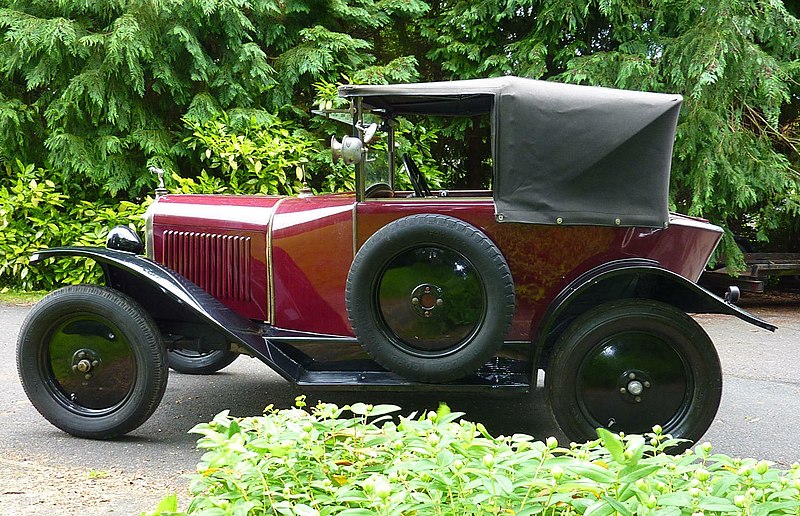
Migo47, CC BY-SA 4.0 https://creativecommons.org/licenses/by-sa/4.0, via Wikimedia Commons
Paris 1924
The Type B10 appeared in 1924, while the early models had a wooden body, there was a steady changeover to an all-steel body. It was as Citroën proudly announced – “Tout Acier”. Essentially the same shape as the B2 the emergence of steel in this model as the means of constructing the body can be seen in the smooth double curvature and close-fitting doors.
The B2 was not without its problems, principal amongst them was a tendency for the chassis to flex and as a consequence, the – steel – doors would fly open!
Braking via the foot pedal was on the front wheels with additional braking on a drum behind the gearbox. The handbrake operated on the rear wheels.
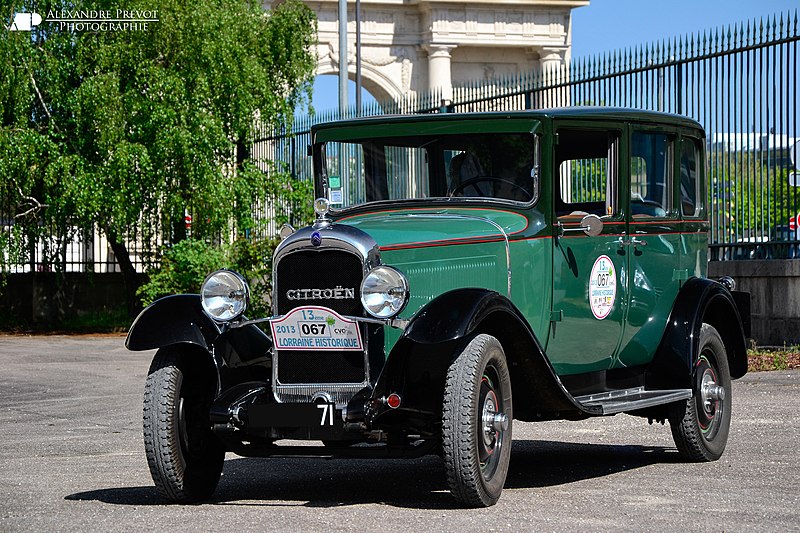
Alexandre Prévot from Nancy, France, CC BY-SA 2.0 https://creativecommons.org/licenses/by-sa/2.0, via Wikimedia Commons
Paris 1925
The B12 appeared in late 1925. It also had front wheel cable-operated braking with an additional brake at the back of the gearbox. The trick is to make the gearbox brake come on AFTER the front wheels have done most of the work else the gearbox brake winds up the rear transmission train. The chassis was a stiffer i.e. less flexible version of the B10 chassis. Shock absorbers on the rear axle only.
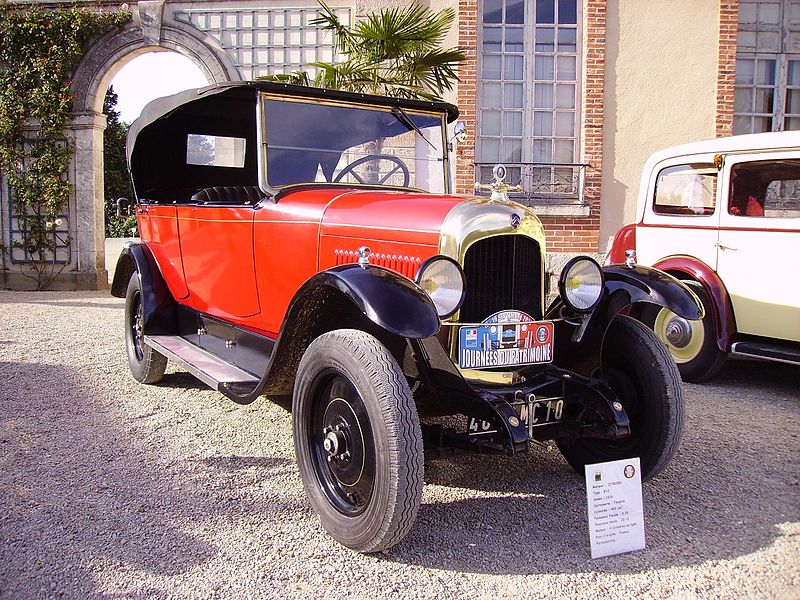
Image Cjp24, CC BY-SA 3.0 https://creativecommons.org/licenses/by-sa/3.0, via Wikimedia Commons
Slough 1925(ish)
At this time the UK chancellor (Mc Kenna) was reinstating a duty of 33.3% on imported cars. This was a law originally imposed after the Great War that had subsequently been revoked. However, in 1925, the country was not doing well economically so the ruling was reinstated.
Given that his cars were selling well here, Citroen decided to assemble his cars in England and quite legally avoid the punitive duty being imposed on assembled cars. Some writers, incidentally, say that duty was nevertheless applied to assembled components e.g. axles, engines gearboxes as they came into the country etc.
Hence A.C. set about building a factory in a pretty small village called Slough that had good rail and ferry links to Paris. The Slough factory was a state-of-the-art factory, one of the biggest in Europe and in production by early 1926. So far as I can tell, the first model off the production line at Slough was the Type B12.
Slough & Paris 1926
In 1926 the B14 appeared. Essentially a B12 body, with a bigger -1539 cc – engine, 4x wheel braking, shock absorbers all around and a lighter yet stronger version of the chassis. The B14 also had (optional) servo-assisted 4x wheel braking (licensed by Westinghouse) in which case it was named the B14f. In England the same car was named the 12/24, the third model out of the Slough factory.
Slough 1926
In 1926 production of the Type C was dropped, almost certainly because Citroën had by now got to grips with press tool technology, and was producing the larger 12/24 (aka B14f) more cheaply than it could the Type C with its wooden body.
En passant…… Covering a wooden automobile body with steel (as was the practice in large part) does not add to the strength of a car but it does add to the weight and costs. Therefore dispensing with a wooden body reduced labour time, weight and costs; because an all steel body was lighter (and stronger) than a wood + steel body.
Summary of names, principle model details and identification clues.
| English Name | French Name | Production Began | Description and identification of the principle models (but being Citroën, not necessarily definitive !!). |
|---|---|---|---|
| 10hp. | Type A 10hp – 1327cc | 1919 | Front wings sweep back. Radiator is the very shallow Vee “wind cheater”. There is often a little “flick up” at the back of the rear mudguards. Disc wheels. 3 large louvres on the sides of the bonnet. The doors are very square at the bottom. Filler cap on the scuttle. Many variations of body type available which goes for all of these early RWD cars. Drum brake via pedal on rear of transmission plus hand brake on rear wheels. No brakes on front wheels. |
| 11.4hp Not made in UK | Type B2 10hp 1452 cc | 1921 | Essentially the same running/braking gear as the A Type. Body is wooden/ash and clad in steel. On early models 3 louvres on the sides of the bonnet.. At some point more louvres on the bonnet sides appeared. Single bonnet catch each side. Doors are square across the bottom yet clearly rounded on the bottom corners. A moulding around the doors indicates that the car is a B2 with a wooden body. Fuel filler on top of the scuttle. Brakes, radiator and wheels as for A Type. Front wings “sweep back” like the A Type. Instruments are scattered around the dash. Car came with tyres and electrics and spare wheel where these things were uusually “extras” on other models. |
| 7.5hp Cloverleaf | Type C 5hp 56 cc Variation in names includes: Petite Citron, La Trefle and Cul de Poule | 1922 | An obviously small car. No door on driver’s side, two seats, and on later models at least one in the rear (aka the Clover leaf or Trefle). Wooden body. Car made in parallel with the Types B2, & B10 and B12 . Combinations of leaf springs with different rates of flex dispensed with the need for shock absorbers. Braking as above. Screen usually a single pane of glass. Despite good sales, production in Slough stopped in 1926 in favour of the pressed steel B2. |
| 11.4hp Not made in England | Type B10 10hp 1452 cc | 1924 | The first all steel Citroen; essentially the same car as the B2 in appearance and mechanicals with quite a lot of production overlap. On a Torpedo (and it is much harder to distinguish between Type B2 and B12 saloons) unlike the almost identical B2, the doors are smooth, with no external door handles because they and the rest of the body are made from steel. So… bottoms of doors on Torpedo are gently curved and the all steel door overlaps the door posts with no shut lines visible giving very clean lines. Therefore – No mouldings around the all steel doors.. Fuel filler on the scuttle now replaced by an air vent. Filler cap is instead mounted on the tank and accessed by lifting the bonnet. On ash framed cars the filler cap may still be on top of the scuttle. As the front end of the car was common to all models, the vent was particularly intended for enclosed cabs/saloons. Not really necessary on the Torpedo models ! The front wings now wrap closely (but there are exceptions) around the front wheels. Front wings can be like those of a B2. To identify a B10 then: steel doors = no mouldings, door handles inside the doors, front wings usually wrap around wheels, Vee bonnet and no fuel filler on scuttle. Famously the B10 chassis was a little too flexible and the doors had a habit of flying open on bad roads. |
| 11.4hp | Type B12 1452 cc | 1925 | The front wings always wrap closely around the front wheels, there are the steel doors with no mouldings, and the Vee bonnet. On ash framed coach built cars (Landaulet, Coupe de Ville etc) the filler cap may still be on top of the scuttle. To differentiate a B12 from a B10, there will be two small nickel knobs typically on the o/s (in English LHD terms) side of the chassis. On some models they may not be plated. A common variant on steel torpedo models and steel saloons is for a pair of plated knobs on both sides of the chassis – 1x tool box and 1x battery box.. Instruments still spread around the dash. Speedo far left, clock far right, ammeter and some kind of oil pressure gauge in the middle, Dash is bare metal usually engine finished Dural, Painted dashboards can be seen on highly restored models. Cable operated brakes on front wheels and back of the gearbox only. Handbrake operates rear brakes independently of the other brakes. Handbrake can be iffy on the B12, as slack in the handbrake mechanism can cause failure. Best to leave in gear and or chock it. Dampers on the rear axle only. Replacing the B2 and B10 by the end of 1926. Doors no longer fly open. Screen no longer pivots within the frame. Top glass swings forwards for visibility in rain. |
| 12/24hp | Type B14 1539 cc. | 1926 | The flat radiator is the principle identifier for the B14 (and the succeeding models the B15 & B18 albeit made in far fewer numbers). There are definitely 2x nickel plated knobs on each side of the car and the steel doors on the Torpedo are like those of the B10/B12. There is a bigger engine and the gear box is higher geared than that of the B12. Dampers now on all four wheels. The Slough built 12/24 always had the servo. The French built B14 did not have a servo but the B14f did. Besides the flat radiator the other principle identifier for this model is the instrument cluster. On all preceding models, the instruments are spread around the dash and a speedo was often an optional extra on the very early cars. On the 12/24 and B14, the instruments are for the first time clustered centrally on the dash in an elliptical shaped binnacle. That said, on these models there was no uniformity of style or type face, with instruments seemingly selected from where ever they could be found . A proud boast in the period sales literature was of a discreet lamp at the top of the binnacle that lit up the instruments when the side and or headlights were switched on. Exciting times !! The same binnacle was used on the succeeding AC4 and AC6 models. Accelerator had been moved from the customary position between brake and clutch to the right of the brake – as in modern practice. Obviously Citroën thought better of this radical move because in the models immediately following, the throttle went back to its original place between brake and clutch. Two nickel plated knobs on each side of the bonnet secure it . Note that on ALL of these models the wheels were of the steel disc type or occasionally wired wheels. Very often wheels from later models have been fitted to these early models. Wrong !! |
